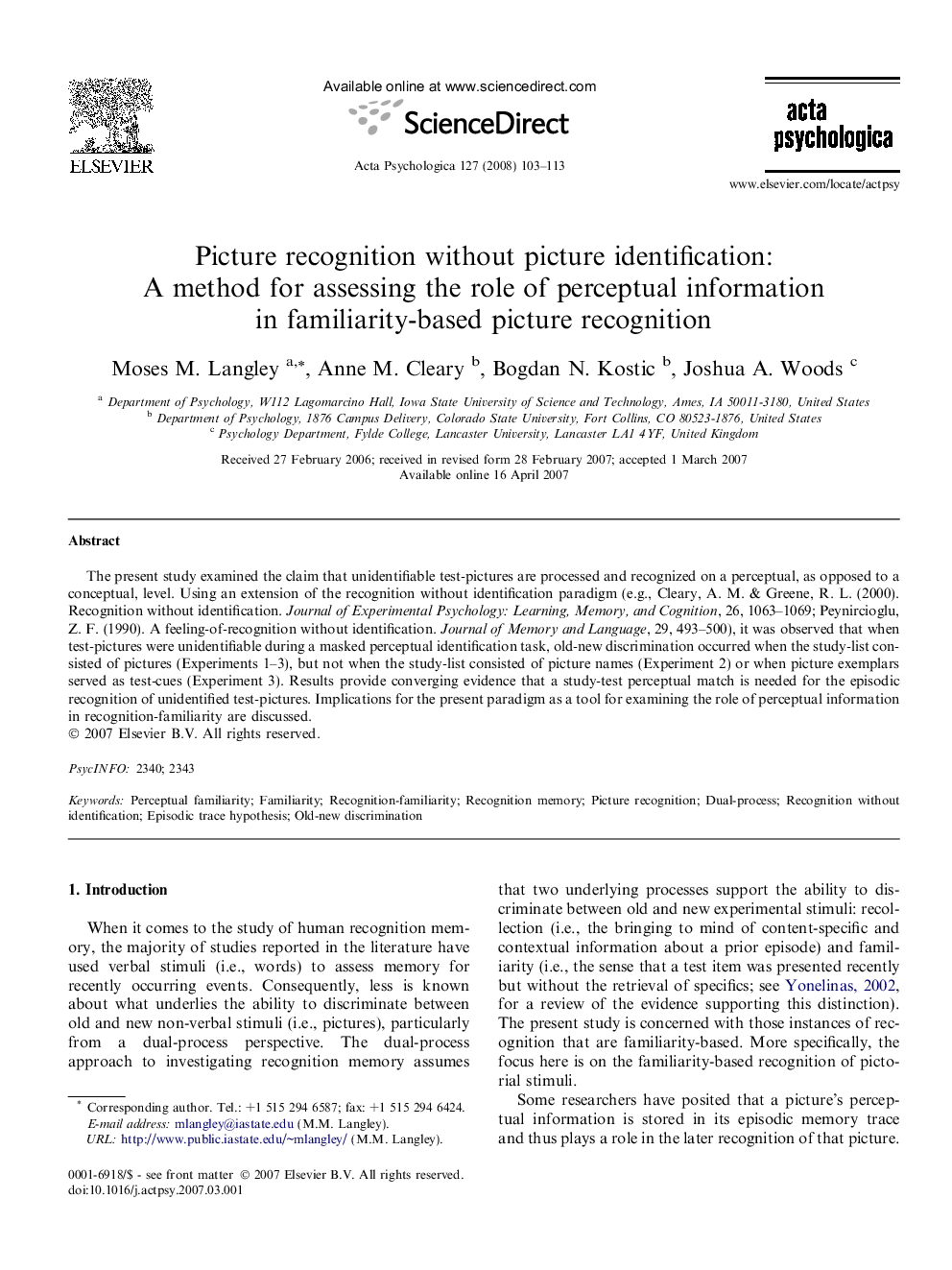| Article ID | Journal | Published Year | Pages | File Type |
|---|---|---|---|---|
| 920552 | Acta Psychologica | 2008 | 11 Pages |
The present study examined the claim that unidentifiable test-pictures are processed and recognized on a perceptual, as opposed to a conceptual, level. Using an extension of the recognition without identification paradigm (e.g., Cleary, A. M. & Greene, R. L. (2000). Recognition without identification. Journal of Experimental Psychology: Learning, Memory, and Cognition, 26, 1063–1069; Peynircioglu, Z. F. (1990). A feeling-of-recognition without identification. Journal of Memory and Language, 29, 493–500), it was observed that when test-pictures were unidentifiable during a masked perceptual identification task, old-new discrimination occurred when the study-list consisted of pictures (Experiments 1–3), but not when the study-list consisted of picture names (Experiment 2) or when picture exemplars served as test-cues (Experiment 3). Results provide converging evidence that a study-test perceptual match is needed for the episodic recognition of unidentified test-pictures. Implications for the present paradigm as a tool for examining the role of perceptual information in recognition-familiarity are discussed.
